You may not find this terribly rewarding unless you're included here, so this is a good time for casual and random browsers to turn back before they get too caught up in the sweep and majesty of the proceedings and can't let go.
First, an excursion to the 'Delmarva Peninsula'
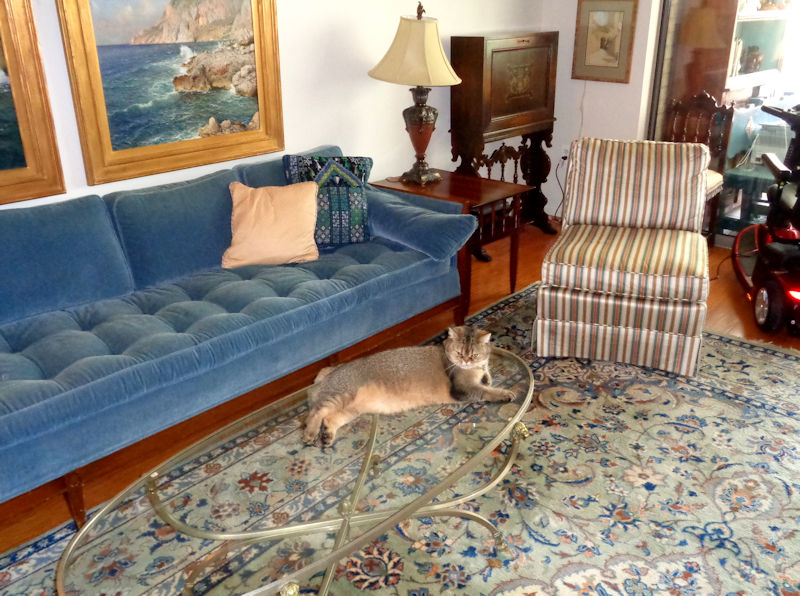
Melvin the Doge in Leesburg, Virginia, decompressing after 14 hours enroute from Geneva, 14 June 2018

Anxious not to be left behind in Leesburg, Melvin plants himself amongst the luggage, 15 June 2018
Now, on to the Delmarva Peninsula
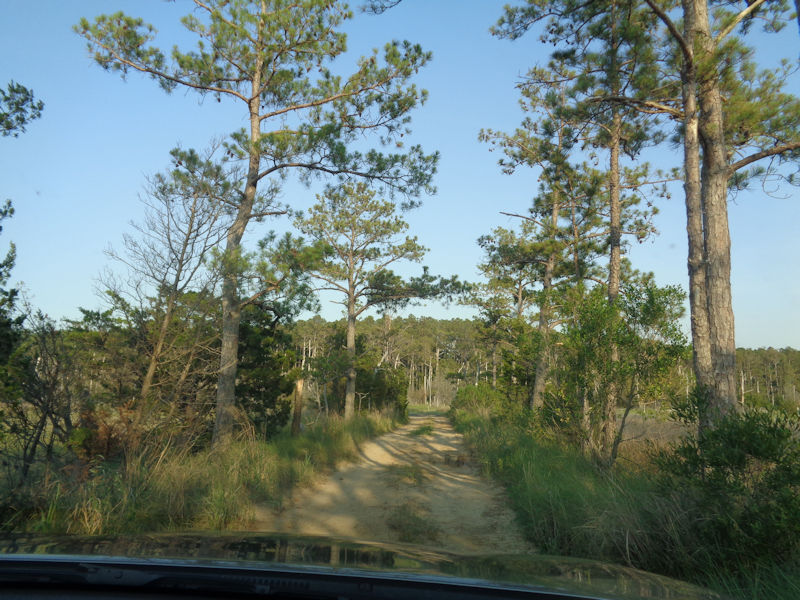
'Delmarva' Delaware includes such worthy attractions as Dover (the state capital), Rehoboth Beach, 'the nation's summer capital', and Seaford, 'Nylon Capital of the World'. 'Delmarva' Maryland includes Salisbury (30,000 residents) and Ocean City, 8 million bathers and sunbathers annually. 'Delmarva' Virginia boasts Chincoteague, with feral ponies. We're in 'Delmarva' Virginia and very grateful for the GPS navigation system.
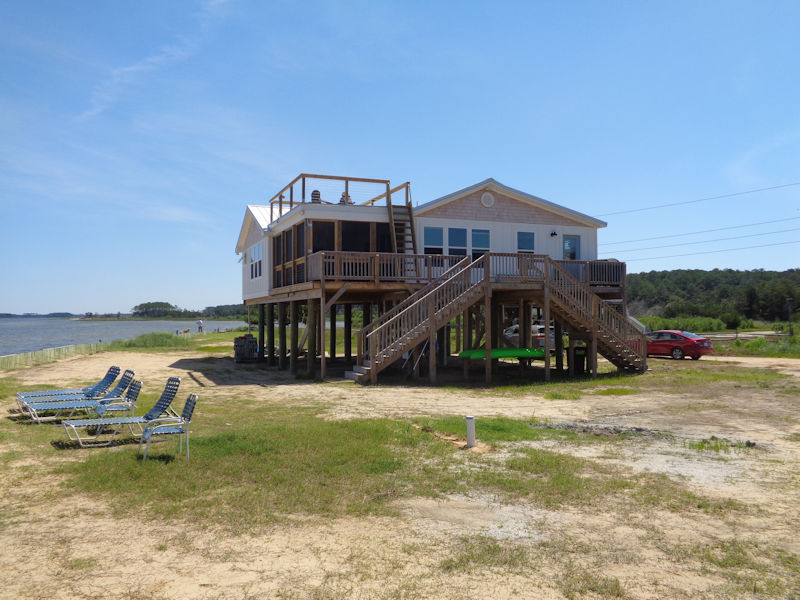
Eh, voilà. The Airbnb 'Fish Camp' just 7km from beautiful downtown Onancock, Virginia, the name of which is not a playful allusion to Genesis 38:8-10. We're here to spend five days and nights of enlightened conversation with our longtime friends Mark and Nancy at more or less our geographical midpoint, and to scope out the Delmarva as a potential destination for an eventual relocation to the USA.

We're the first clients of the Airbnb 'Fish Camp' near Onancock, and the proprietors have done it up very nicely. The approach road had not yet been graded, no problem there, and the horrific biting and stinging bugs everywhere outside were easily tolerable if we stayed indoors. Or bought some bugkiller goo, which we hadn't done.
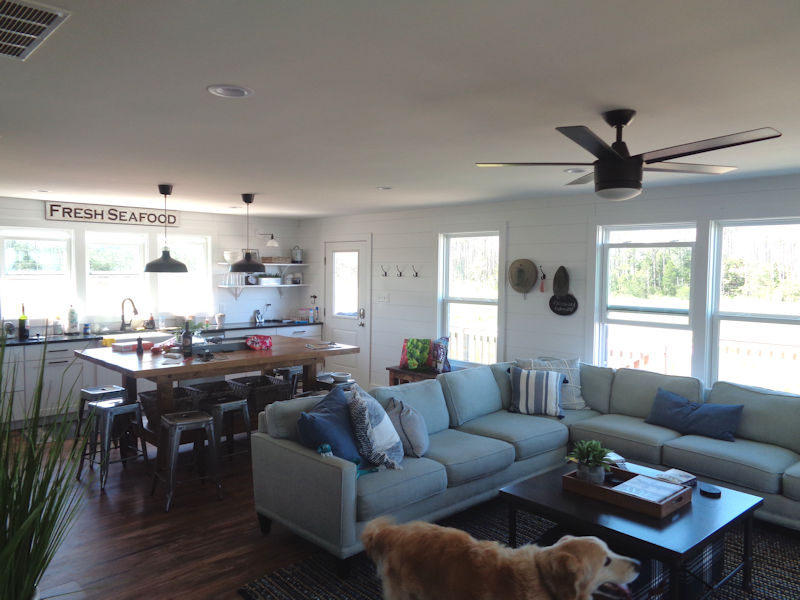
Our canine colleague Hudson behaved himself in an exemplary manner and bonded well with our own companion Melvin the Doge.

The Delmarva Peninsula was occupied by Native Americans since pre-Clovis times, who had to be removed by the Americans to make way for Civilization. The Spanish tried to colonize it but gave it up, and the Dutch and then the Swedish took their turns, until it was incorporated into the Dutch colony of Nieuw Nederland in 1631. The British decided in 1664 that they owned the place, but they got the boot in the 'Revolutionary War' of 1775-1783. The peninsula or parts of it have tried to become its own state a few times, most recently in 1992, but no one has been interested.

Our friend Nancy catching up on her reading, and so shall we all.
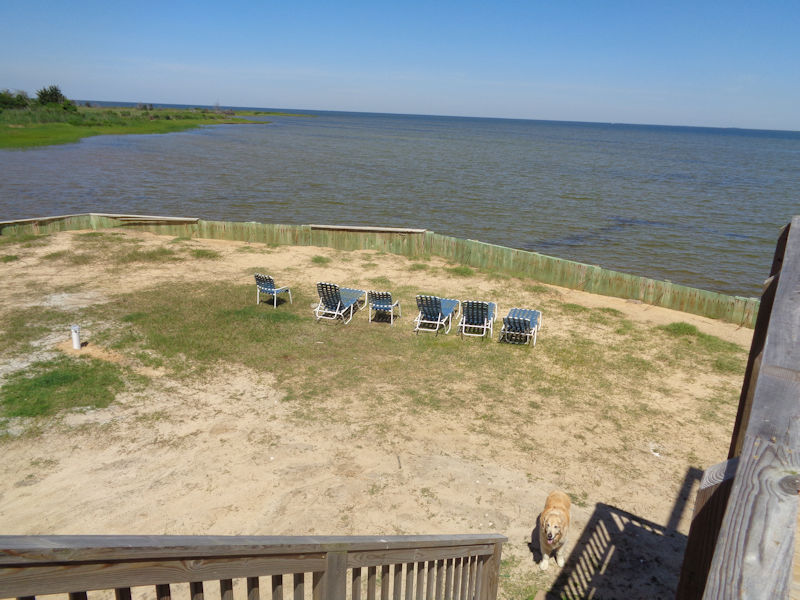
The culture of Delmarva is described on Wikipedia as very different from that of the rest of the Mid-Atlantic region and much closer to that of the southern USA, 'much more conservative than the mainland counties' of those three states. But that's not the only reason that we instantly abandoned the idea of relocating permanently to the Delmarva Peninsula -- one look at our Airbnb on stilts, in the Bush/Trump era of terminal Climate Change, was sufficient (the highest place on the peninsula is 31m a.s.l, which is about where the global sea level may be still in our lifetimes).
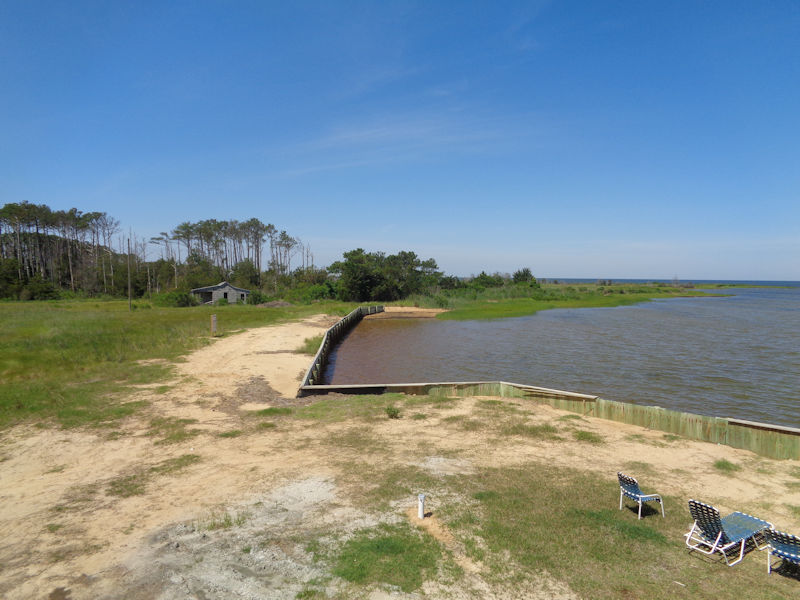
In addition to our two stilt-houses here on this empty stretch of peninsular Virgina coast, we have a wreck of a shack and a battered old sea wall that must have been intended to protect something in the past but won't be much good for what's coming next.

Our approach road is meant to be newly graded sometime soon, but it's not a problem for us -- though it was for the UPS driver who came to deliver our Fish Camp User's Manual a few days later.

There are impressive wetlands all round here, but whether they'd meet the Ramsar criteria for a Wetland of International Importance we have no idea -- but the site at what looks like the mouth of the Potomac river, called the 'Chesapeake Bay Estuarine Complex', a National Wildlife Refuge, was designated as a Ramsar Site as one of the USA's first Ramsar Convention designations, in June 1987, and that's only 60km across the Chesapeake Bay to the northwest.
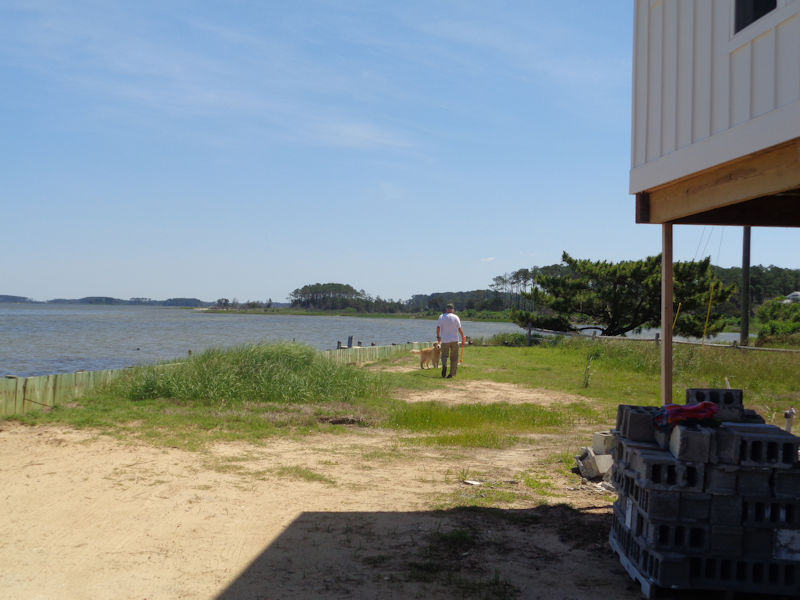
Hudson is out for his exercise.
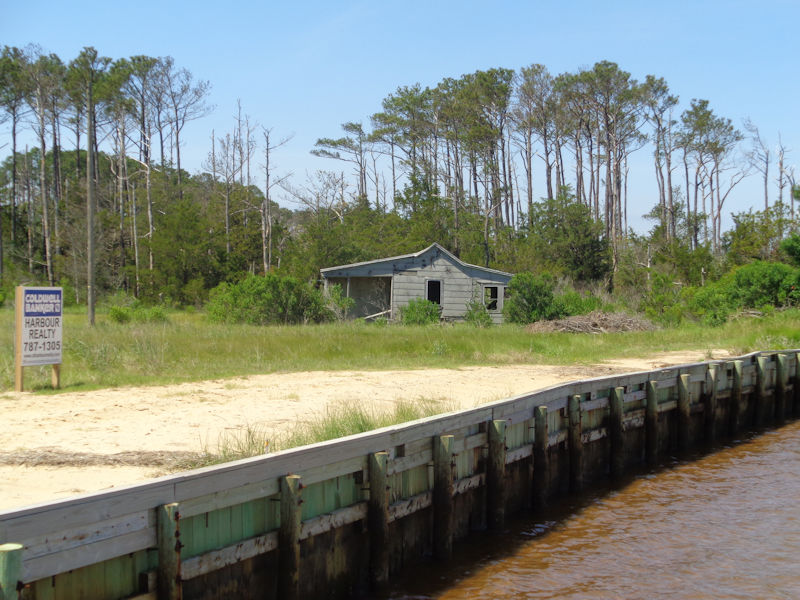
The shoreside lot between the Fish Camp Airbnb and the wrecked cabin is for sale -- good luck with that -- but if the old wooden sea wall can hold out for a few more years, maybe there's something for us. Except for the bugs. Many of them are invisible but painful.
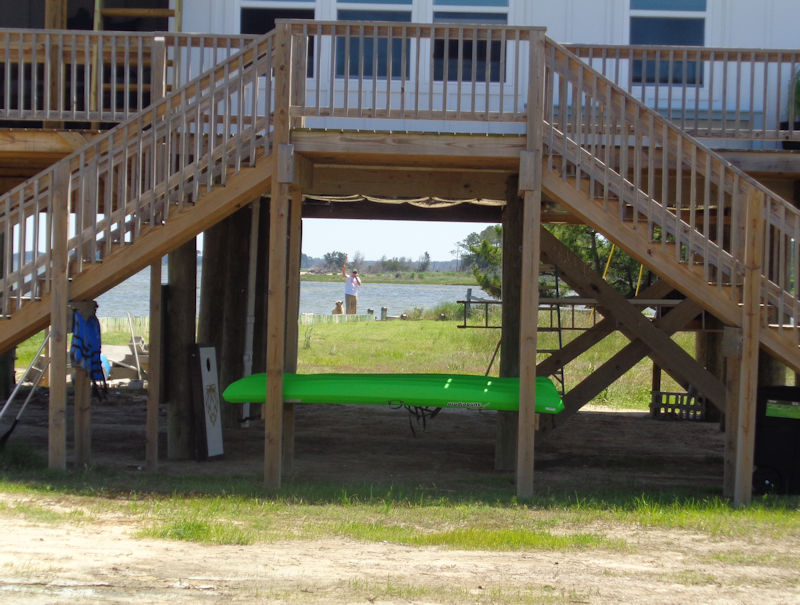
Mark's throwing Hudson's ball in a kind of pelota or jai alai basket (jai alai balls have been known to reach 328 kph speeds, but here we only need to keep Hudson occupied for a while).
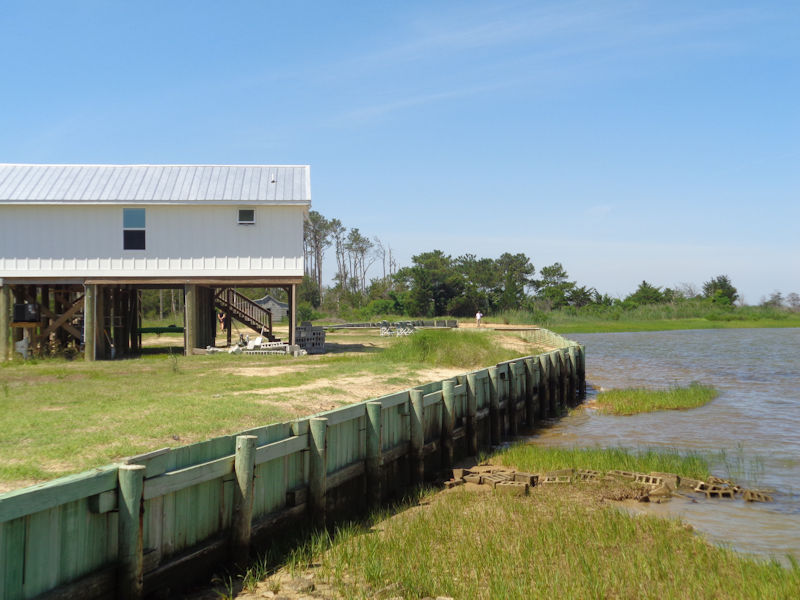
Houses on stilts are possibly a good solution for the next half-century or so, but The Netherlands is already taking the precaution, so I've heard, of building new houses on floating pontoons. (Not much good unless the local supermarket does the same thing.)

Pelota in motion -- watch that dog go! (The Spanish game of pelota is ancient and Basque, and the Palazzo della Pilotta in Parma, Italy, is named for the Spanish garrison troops playing the game in the courtyards in the 18th century.)

Sea level-wise, we're ready for almost anything. (The red car is just a rental.)

Sundown on the Chesapeake Bay
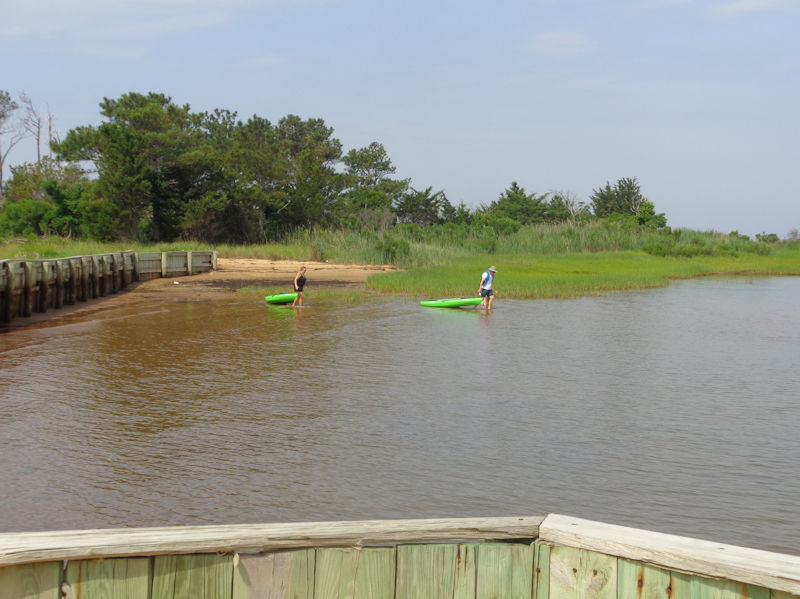
The kayak patrol is leaving base.

Hudson is coming along as well.

-- Come back soon.

With Hudson still splashing alongside
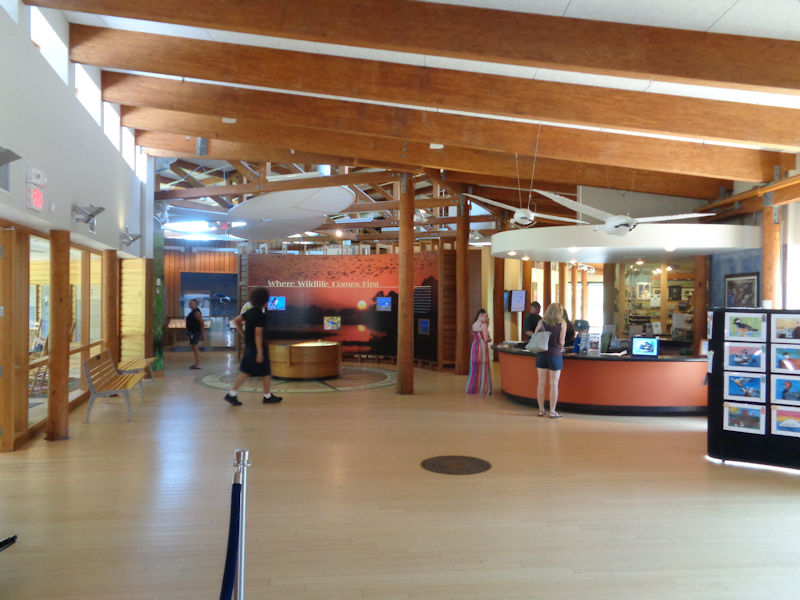
The US Fish and Wildlife visitors' centre at the Chincoteague National Wildlife Refuge (NWR), which is connected to . . .
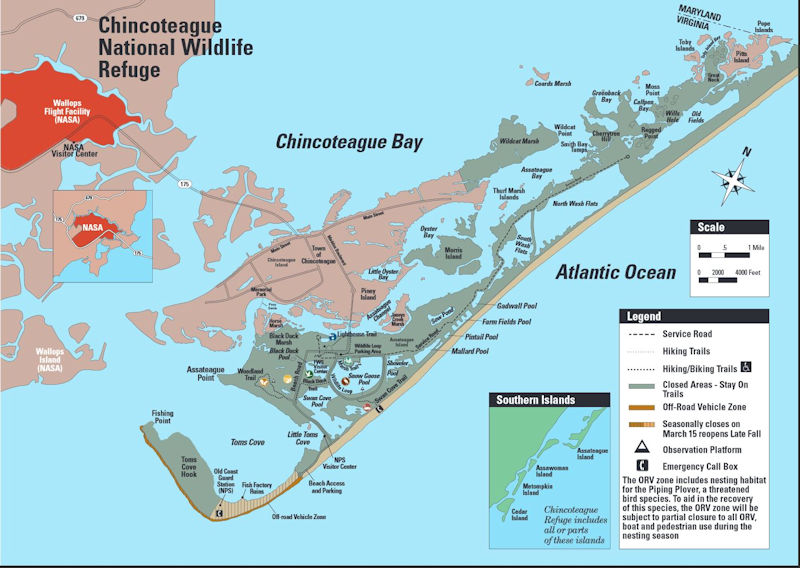
. . . the Assateague Island National Seashore, a barrier island running from here in Virginia 60km northwards towards Ocean City, Maryland. On this map from the NWR brochure, the best spots for viewing the famous feral ponies are located near the Woodland Trail for hiking on pavement, so that's where we're heading.

The Woodland Trail -- off to visit the Feral Ponies at Horse Marsh!
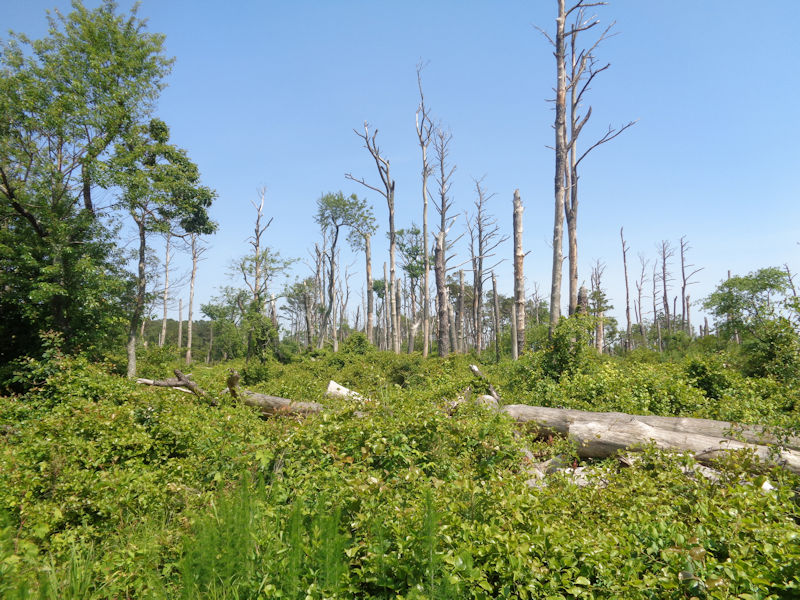
Stay on the road! Yes, okay.

This is absolutely ridiculous. We are at every moment carrying 2 kilos of biting bugs attached to us and trying to drag us down to finish us off. We're getting back to the car if we can.
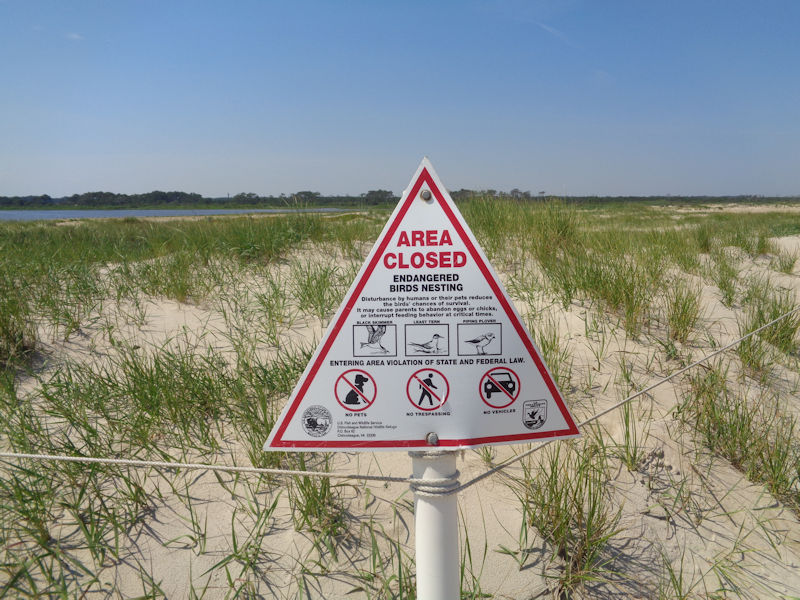
An encouraging sign. Government officials are still taking proper care of our environmental heritage even in the Age of Trump and his embarrassingly anti-science Cabinet cronies.

Fewer vicious bugs out in the Atlantic shoreline breeze, but still too many.
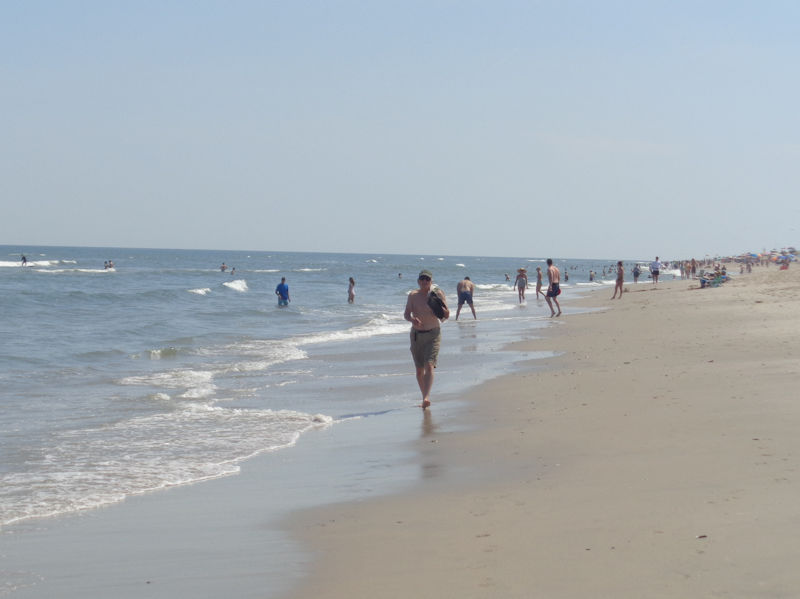
Rejoining Mark after our brief walk up the beach a ways; he preferred to stay in the water where the bugs couldn't find him.
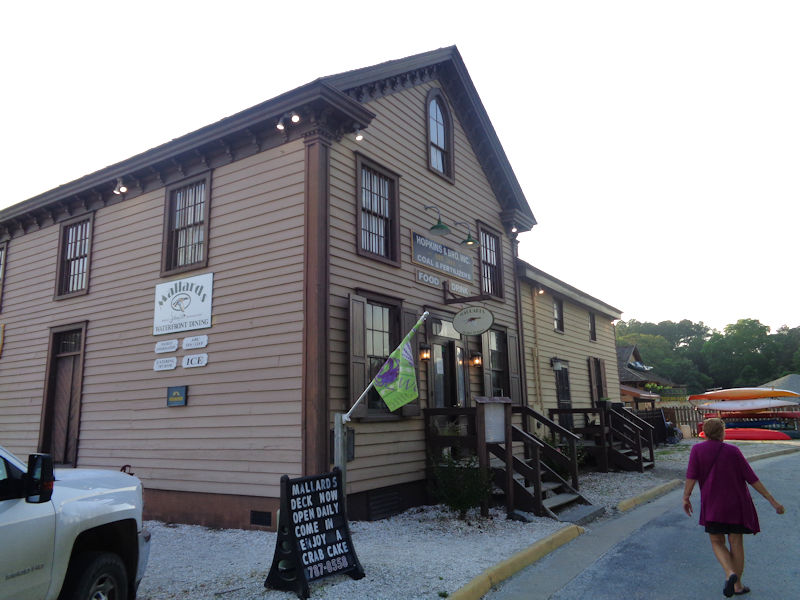
An excellent seafood dinner at Mallard's in Onancock, on the terrasse overlooking the harbor
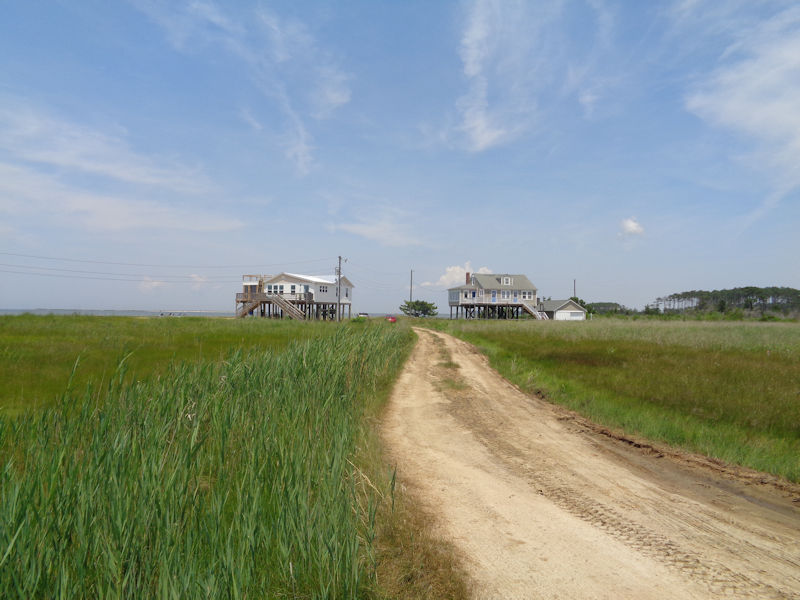
We're off for a solitary swamp hike in the absence of the rest of our party, who are doubtless having more fun.

Thicket Point Lane awaiting grading
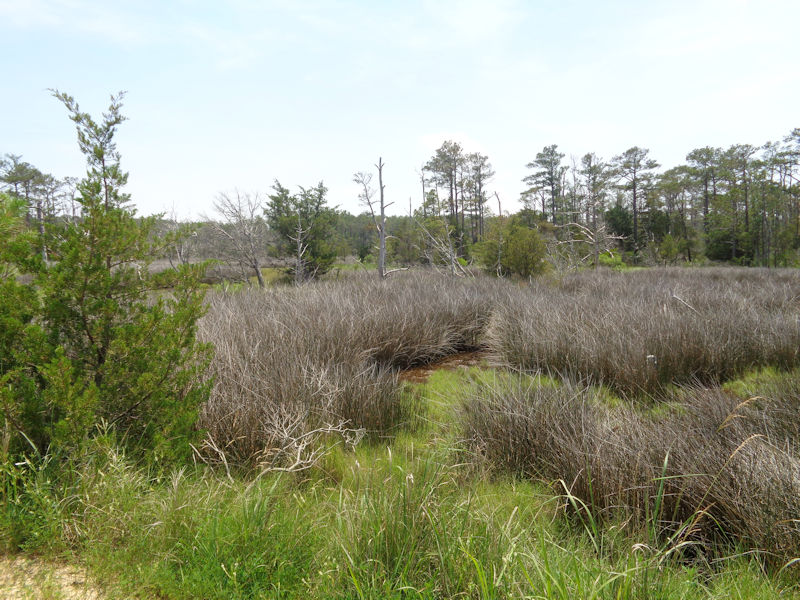
Some unpleasant marsh vegetation
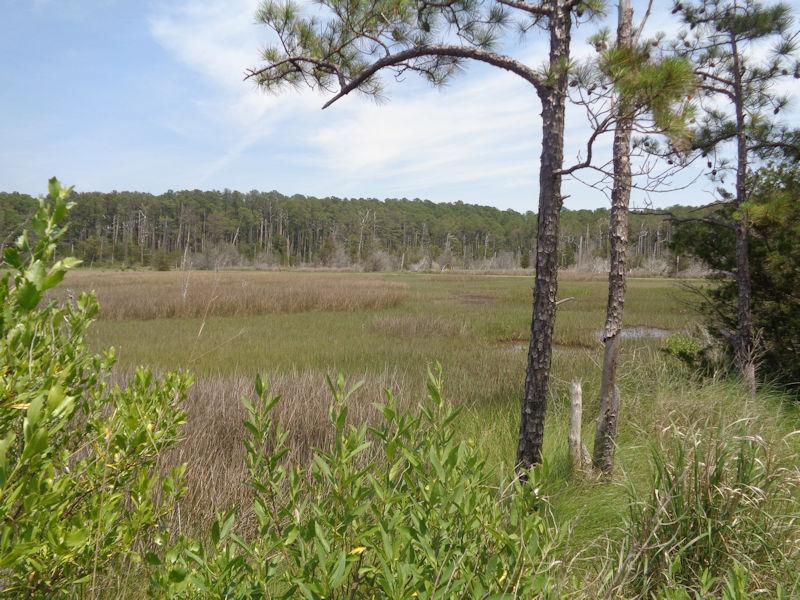
A very flat landscape (awaiting sea level rise)

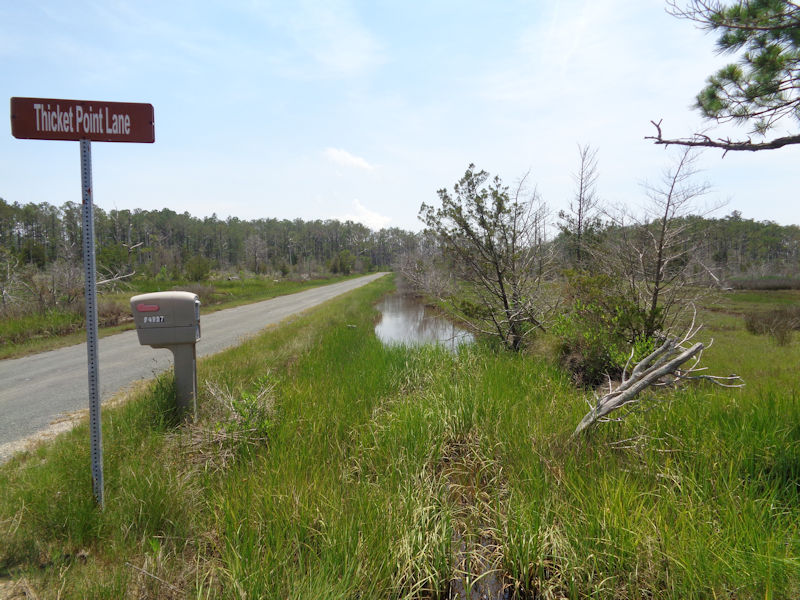
Out the driveway to the main road (Route 641)

All roads ditched on both sides

Ditches filled with crabs, and . . .

. . . sandy soil teeming with creepy sand crabs in their millions --
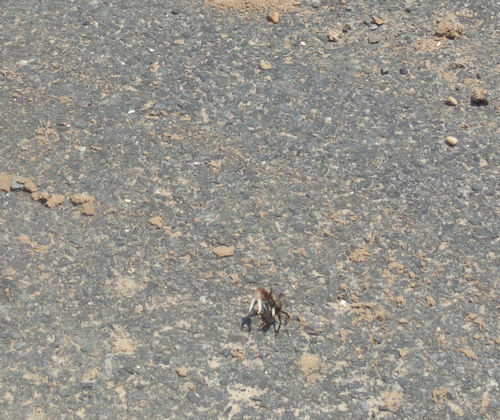
Here's one. Vile little things.

We're still, believe it or not, on Route 641.

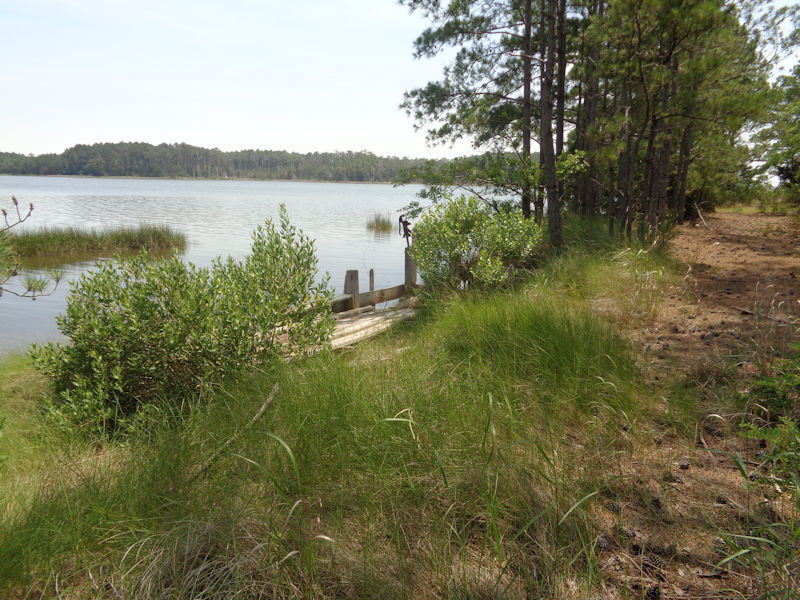
A old and disused water pump
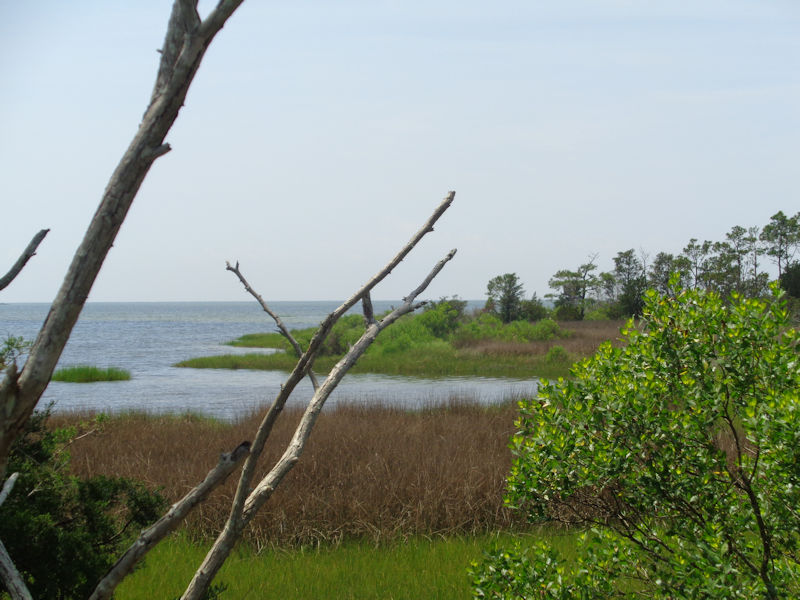
Wetland scenes

We're awaiting the newly completed user's manual to accompany our Airbnb, recently sent by the owners by the United Parcel Service. It should have arrived by now.
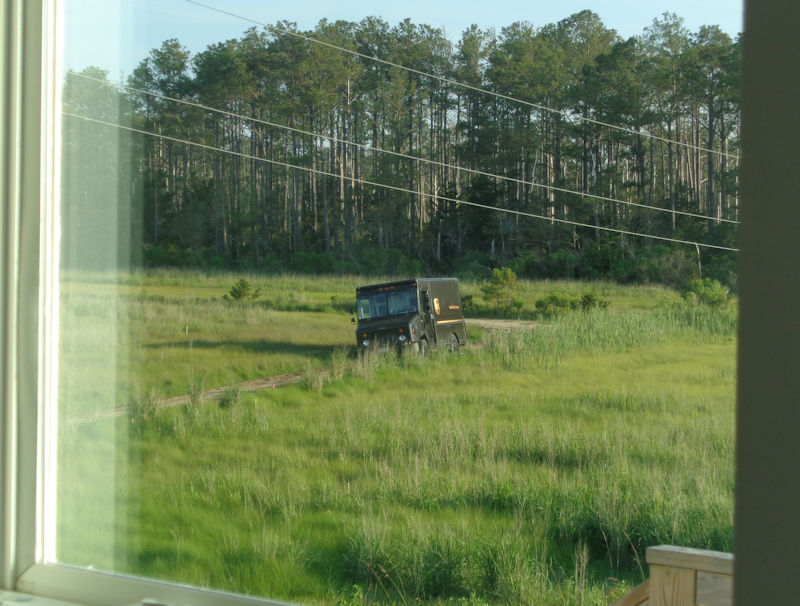
There's the hold-up. (We labored long and hard for a few minutes trying to help the driver get out of the ditch, but these are serious ditches around here and we were afraid of tipping the whole thing over.)

Luckily, UPS has retainers everywhere with local emergency services, so 20 minutes later . . .

. . . we've got our user's manual and our driver's glad to see the last of us.

Our neighbor, evidently long departed

Who lived here, when, and most of all, why?

The swamp may be reclaiming it.
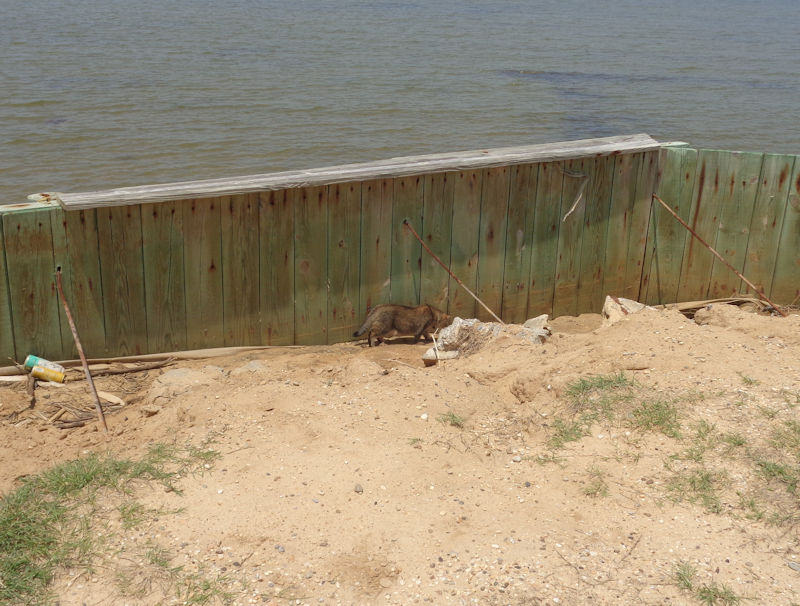
Melvin investigating the optimistic seawall

Mad dogs and Englishmen go out in the midday sun, but intelligent French cats get in under the house.


A fairly fierce storm to see us off

A high-tide sort of fierce storm, in fact.
Tomorrow we're off down Highway 13 along the extremely rural Virginia Eastern Shore, 90km or so, to cross the bay on . . .

. . . the Chesapeake Bay Bridge-Tunnel (CBBT), an 18 mile crossing over the bay that includes two bridges over shipping channels on the eastern end and two one-mile tunnels under the navigation routes near the western side, as well as 12 miles of 'low trestles' and four manmade islands along the way. It was opened in 1964, and a parallel expansion alongside added in 1995, and it cuts hundreds of thousands of miles off the trip north around Baltimore and Washington, DC, to mainland Virginia.

These must be the 'low trestles', and . . .

. . . this must be one of the tunnels. Once over the bridge, we join Interstate Rte 64 near Norfolk and Hampton and proceed 240km past Newport News, Colonial Williamsburg, Richmond (the state capital), Short Pump, Gum Spring, and Zion Crossroads to Charlottesville in western Virginia. (Rte 64 continues 950 miles, 1,500km, westward to end in Wentzville, Missouri.)

To this nice little Airbnb cottage on Rugby Road in Charlottesville, conveniently poised to begin some more serious househunting over the next few days.
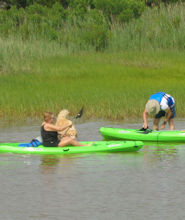 Dwight Peck's personal website
Dwight Peck's personal website















































































































































































